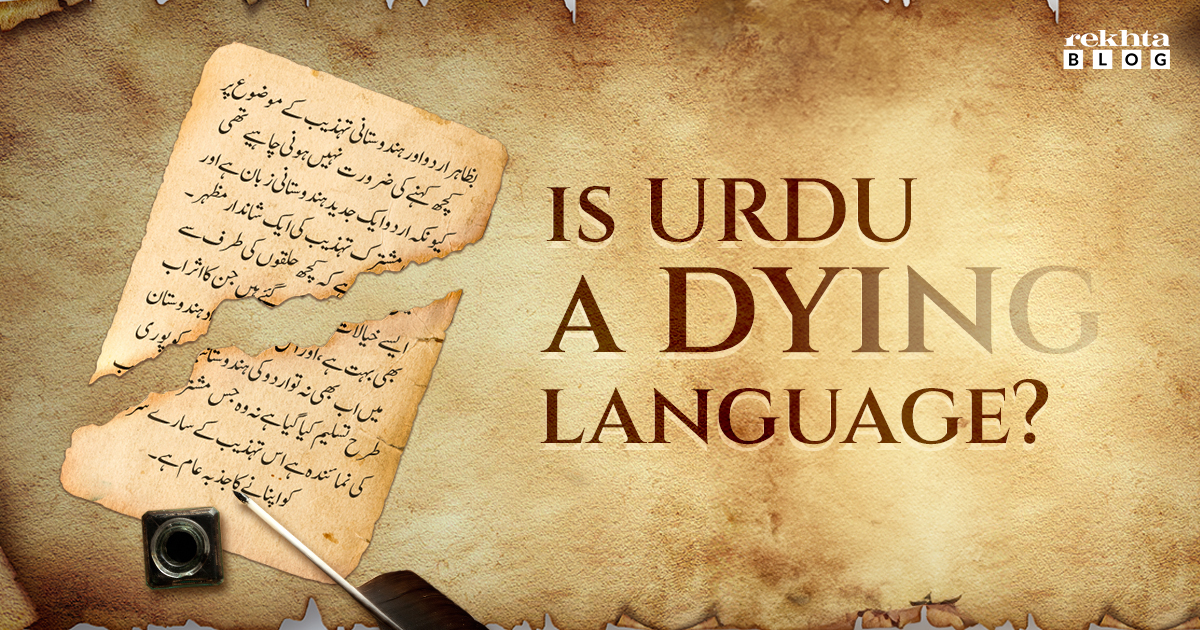
Is Urdu a dying language?
In 1977, a well-known journalist and writer late, Kushwant Singh, called Urdu a dying language. Decades later, and just a few months ago, while hearing the case of the Shiv Sena split, a clip related to Urdu became quite viral and a topic of discussion on social media. During the debate, Tushar Mehta, the Solicitor General of India, pleading on behalf of the Governor of Maharashtra, read a couplet from the renowned Urdu poet Bashir Badr. It read:
Main chup raha to aur galat fehmiyan badhi
Wo bhi suna hai usne jo maine kaha nahi
(I chose to stay quiet, which added to the confusion. They seemed to hear things that I didn’t say.)
Upon this, the courtroom burst into laughter for a moment. Chief Justice D. Y. Chandrachud, who generally speaks English, expressed his interest and asked in Urdu about the relevance of ‘Us ne kaha nahi’ in this legal parlance. Tushar replied, ‘Sir! This is a couplet in Urdu that the poet said about someone else.’ The Chief Justice then invited Uddhav Thackeray’s lawyer Kapil Sibal to intervene. Sibal made his comments and concluded the debate by saying that Urdu is a beautiful language, but it is now dying.
Is Urdu dying? Let’s take a brief look at its history.
Urdu originated from the dialects of Delhi and its neighbouring regions, including Braj Bhasha, Khadi Boli, Haryanvi, Kanoji, and Mewati. It received special attention from the Deccan sultanate that heavily patronaged works in the Deccani Urdu. Soon, Urdu literature started to emerge in Northern India. It became the lingua franca of much of North India.
How did a language with such a rich history become the subject of discussions about its ultimate decline? The situation may not be as dire as some individuals intentionally portray it to be.
Three critical statistics demonstrate the significance and popularity of a language within the digital world. The first is the number of books and newspapers published and sold in that language. The second is analysing the language used in popular TV programs like news broadcasts and debates and evaluating their popularity through TRP ratings. Finally, the amount of online content in a given language is also an essential factor. The more articles and content available, the stronger the language’s development will likely be.
A report by Vignesh Radhakrishnan in the famous English newspaper ‘The Hindu’ presented statistics on the number of Wikipedia articles available in different languages. English had the highest number of articles among the 320 world languages, with 6,671,236 articles. Cebuano, a regional language of the Philippines, came in second with 6,123,197 articles. German, Swedish, Dutch, and French also had considerable articles. Chinese had the most pieces, with 13.6 million.
Among the constitutionally recognised languages in India, Urdu had the highest number of articles available on Wikipedia, with 1.91 lakh articles. Hindi, Tamil, and Bengali followed with 1.57 lakh, 1.54 lakh, and 1.4 lakh articles, respectively.
Urdu is among the 24 languages the Indian Constitution recognises under the Eighth Schedule. It is also an additional official language in Andhra Pradesh, Uttar Pradesh, Bihar, Jharkhand, West Bengal, and Telangana, also the first official language in Jammu and Kashmir. Pakistan is the only country outside India where Urdu serves as the official language and is used as the lingua franca. Urdu is recognised and protected by the South African constitution in light of the Indian and Pakistani immigrants.
Apart from official recognition, its use in popular culture and the emergence of a new wave of writers and readers of Urdu literature present a strong argument against it being a dying language. Urdu is at an inherent disadvantage in the Digital sphere, as the essential functionalities, like correctly parsing and typing Urdu, offer a technical challenge for the average person.
Despite these challenges, Urdu is flourishing in the digital diaspora. Numerous organisations are striving to establish Urdu as a feasible digital communication medium. They are accomplishing this by creating the required infrastructure for its online use and converting content previously only available in print to digital format. Rekhta Foundation’s efforts in making classic poetry and books accessible online are also noteworthy.
Urdu is just as vibrant as any other prominent South Asian language when considering the number of people who speak it. Thanks to technological progress, its presence on the internet will only confirm its appeal and significance.
The blog was previously published on greaterkashmir(.)com
NEWSLETTER
Enter your email address to follow this blog and receive notification of new posts.



